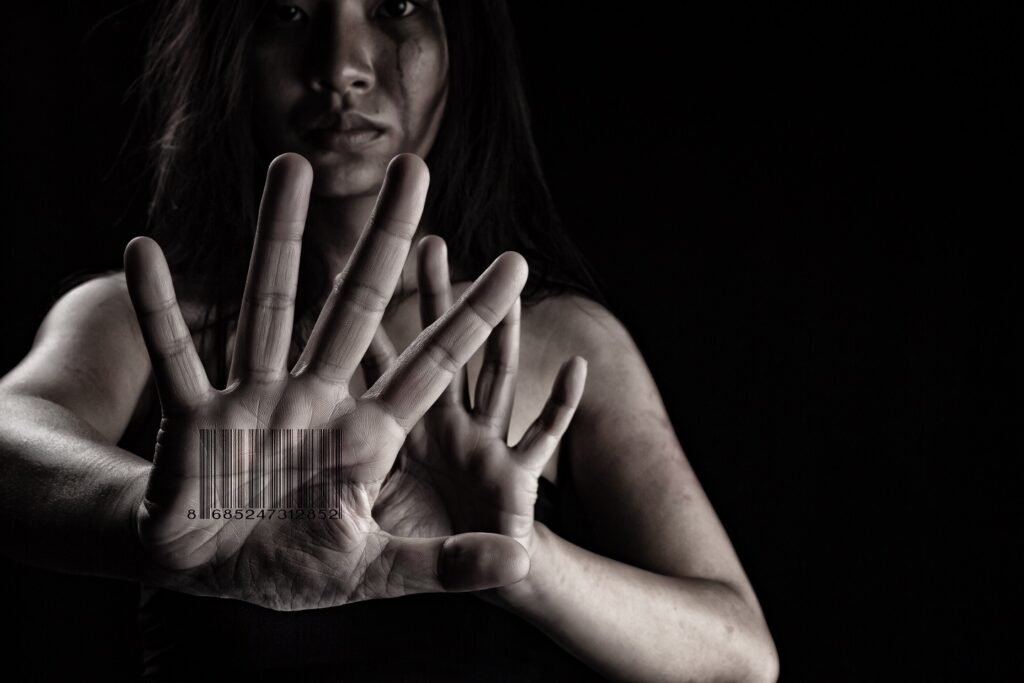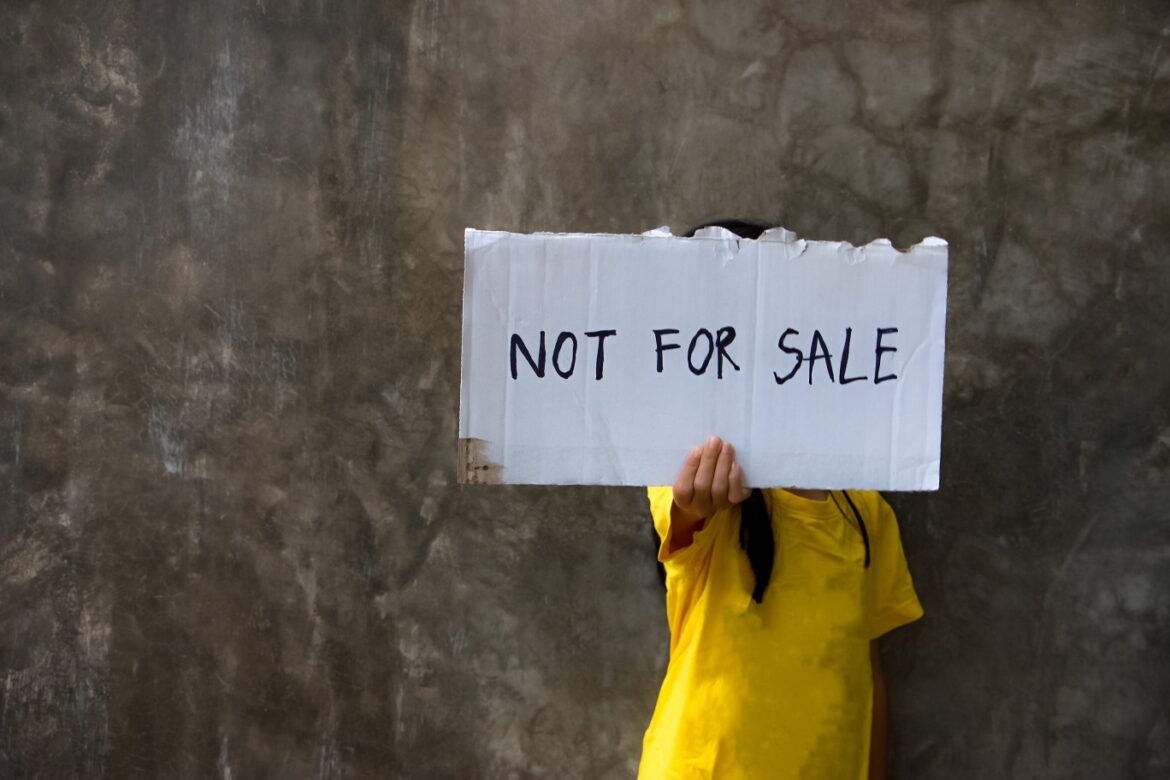(Guest article by Maris Bey, a Master of Social Work student at the University of North Carolina at Charlotte. She has worked with adult and youth sex trafficking survivors in restoration care services for several years.)
What is human trafficking?
Over the past twenty years, the issue of human trafficking has emerged at the forefront of the social conscience of the media and socially minded individuals. It is an issue whose details can be so horrific that, at first glance, one may deny they can be true. Human trafficking has two preeminent forms: labor trafficking and sex trafficking.
United States law defines human trafficking as the use of fraud, force, or coercion to induce an individual to perform labor or a commercial sex act. Additionally, any child under 18 involved in a commercial sex act is always a victim of trafficking. Human trafficking is often confused with human smuggling, which involves the illegal movement of people across international borders. While a victim may be both trafficked and smuggled, it is crucial to note that many individuals are trafficked within their own homes or communities. In the United States, labor trafficking often takes the form of agricultural labor or work in restaurants, hotels, and nail salons.
In the United States, sex trafficking is present and preeminent in all aspects of the commercial sex industry, including pornography, street or brothel-based prostitution, and online-based prostitution. The terms “prostitution” and “sex trafficking” have different connotations and elicit different levels of empathy among the general public. Therefore, survivors and advocates have moved towards the term “commercial sexual exploitation” or “commercial sexual exploitation of children (CSEC)” to clarify the issue and dispel stereotypes.
It is estimated that there are 24.9 million people currently being trafficked across the world. In 2018, there were 49,032 detected victims of trafficking internationally. Of these victims, 50% were sexually exploited, and 38% were in forced labor. Across types of trafficking, the demographics of detected victims were 46% adult women, 20% adult men, 19% girls, and 15% boys. In 2021 in the United States, there were 16,554 individual victims reported to the US National Human Trafficking Hotline. Of course, this statistic represents only reported cases and is, therefore, only a part of the greater issue.

Who is involved in trafficking?
As the data suggests, any individual could be a potential trafficking victim. However, pre-existing vulnerabilities and power imbalances put someone more at risk for trafficking. In the United States, these vulnerabilities include demographic factors such as being female, being young, identifying as LGBTQ+, being a person of color, having native status, or having physical or mental disabilities. Environmental risk factors include living in an area with high levels of poverty or crime, low parental involvement in a youth’s life, involvement in foster care, drug or alcohol use, or living in an area with a high level of recruitment for trafficking.
Recruitment into sex trafficking occurs in various ways; while the Hollywood version of trafficking as a kidnapping by an unknown trafficker can happen, that is not the most common method. Most often, a trafficker is someone known and trusted by the victim, such as an intimate partner, family member, or friend. The trafficker will use physical, psychological, or chemical control to keep the victim trapped and to ensure that they continue to generate revenue through performing sexual services.

Labor trafficking generally receives a lot less attention than sex trafficking. Labor trafficking victims often hide in plain sight through their work in agriculture, hospitality, and beauty services. Victims are often promised a lucrative job offer that is a fabricated story to lure the individual into a situation of forced labor. The trafficker then uses physical force, confusion, the confiscation of documents, the threat of deportation, or other means to control victims.
In the issue of trafficking, much of the focus is placed on the victims: their demographics and how they are trafficked. But to truly understand trafficking, we must also look at the parties perpetuating the trafficking of victims: traffickers and consumers. Labor traffickers can be agricultural property owners, foremen, or business owners. A third-party trafficking group may provide labor for a company at a reduced rate and control the people they are exploiting. Sex traffickers can be individuals working alone or as part of a gang or larger trafficking ring. Both labor and sex traffickers can be individuals one would not suspect, such as family members.
Who are the consumers of trafficking? More likely than not, we have all consumed food or purchased goods that were produced through labor trafficking, as it is unfortunately integrated into our modern commerce system. The demand for sexual services drives sex trafficking. Sex buyers are primarily male but come from various backgrounds: all races, socioeconomic statuses, marital statuses, and individuals who may or may not have a criminal record. Between 10 and 20 percent of men in the US report having purchased sex at some point. Taking the perspective of supply and demand, much of the recent anti-trafficking work on a state and national level has focused on strategic ways to reduce the demand for commercial sex.

What can we do?
The most important thing one can do to combat human trafficking is to listen to the voices of survivors as we continue to educate ourselves and raise awareness of the realities of trafficking. Resources for further education are included at the end of this article. A significant component of combating sex trafficking is reinforcing a cultural shift in the view of purchasing sexual services, including the use of pornography. The demand for these services drives sex trafficking, and while not all sex workers are victims of trafficking, exploitation is enmeshed in the sex industry. It is crucial to know the signs of sex and labor trafficking so that reports can be made to the National Human Trafficking Hotline. This National Human Trafficking Awareness Day, take the time to learn a little more about the issue that affects the lives of so many people across the globe.
Resources
National Human Trafficking Hotline: Call 1-888-373-7888; Text 233733
National Center on Sexual Exploitation
Trainings and Community Resources through Shared Hope International
“20 Ways You Can Fight Human Trafficking”
“Girls Like Us” by Rachel Lloyd
“Renting Lacy” by Linda Smith
Why Fighting Sex Trafficking Needs to Include Fighting Porn by Fight the New Drug
 Food
Food Farmers
Farmers Sustainable Living
Sustainable Living Living Planet
Living Planet News
News